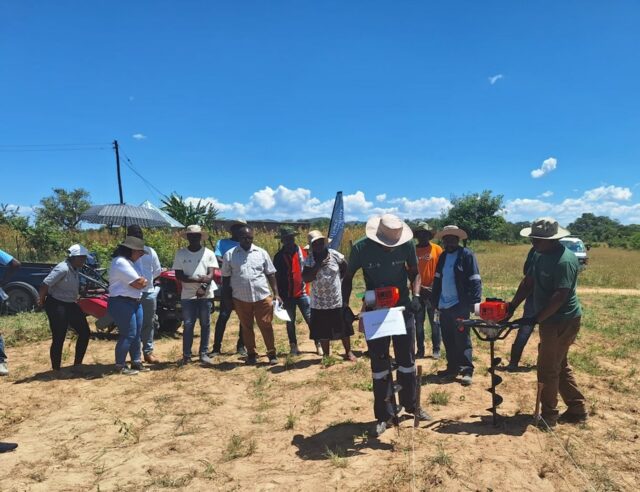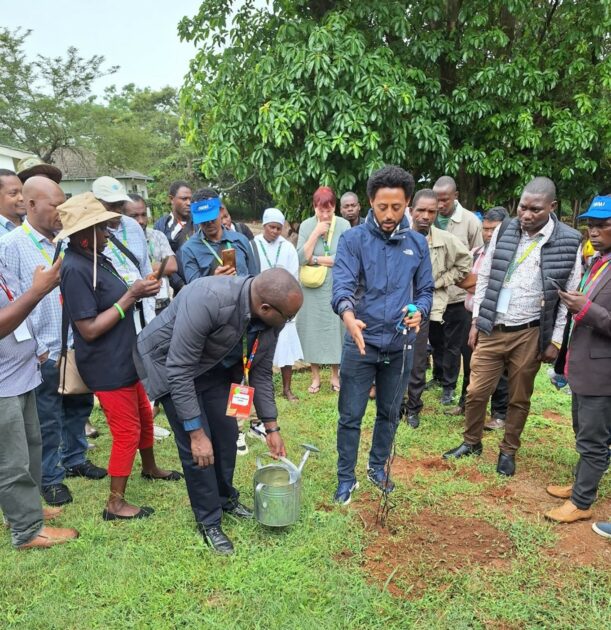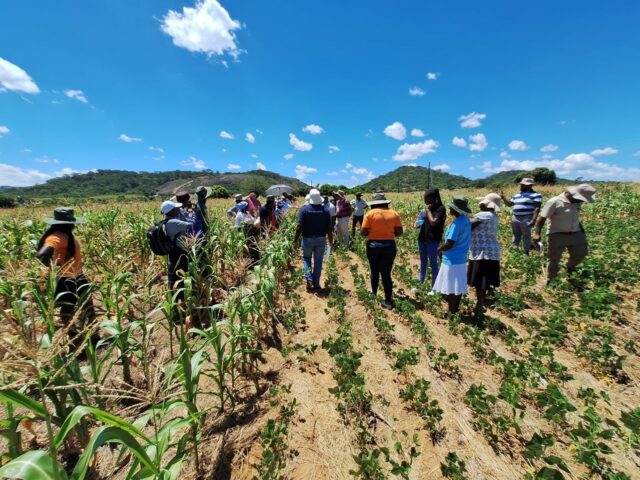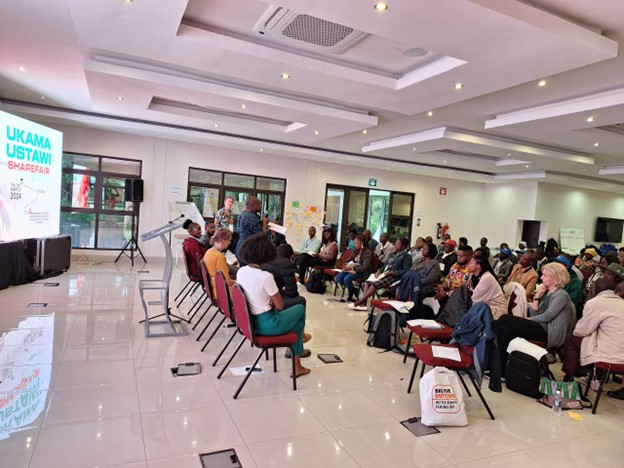Read in
The Zimbabwe Team of the Agroecology Initiative participated in the Share Fair event of the CGIAR initiative Ukama Ustawi (UU), which was held in Masvingo, Zimbabwe, and brought together farmers, the private sector, and researchers from seven countries (Zimbabwe, South Africa, Zambia, Mozambique, Malawi, Kenya, and Ethiopia). The overarching goal for our participation was twofold: Glean insights from the UU initiative’s experiences and practices and, where possible, to adopt and adapt approaches and technologies relevant to the Agroecology Initiative. Equally significant was the aim to share our learnings and explore potential areas of collaboration. From the UU initiative perspective, the Share Fair engagement sought greater integration and knowledge exchange across its work packages, and countries where UU is being implemented, and other CGIAR initiatives. Farmers were at the center of the Share Fair, sharing and learning from each other, together with the experts.
The event aimed to foster collaboration and innovation in addressing key issues related to agriculture and sustainability in the region.
Insights from UU Share Fair activities
The Share Fair showcased an array of innovative technologies poised to transform agricultural practices in the region, among these new solar-powered borehole irrigation, chameleon soil moisture sensors for irrigation management, and conservation agriculture practices that included crop intercropping and rotation, cover cropping (mulching), and minimum tillage. Notably, mechanization options tailored for conservation agriculture, such as 2-wheel tractors and basin diggers, were demonstrated, with particular emphasis on gender-inclusive approaches for smallholder farmers. UU initiative prioritizes integrated crop and livestock systems, which are vital for small-scale farmers in terms of both dietary needs and income generation.


We shared insights on the benefits of the adoption of mother-baby trials. Setting up such trials can help researchers and stakeholders identify potential risks, challenges, and limitations of the innovation without risking large-scale failure or negative impacts on the environment or communities. This helps in making informed decisions about whether or not to adopt an innovation.
In addition to technological innovations, we discussed various agribusiness tools aimed at supporting and empowering smallholder farmers. Different companies presented their agribusinesses and how they complement farming practices related to a spectrum of services, ranging from agroclimatic advice and improved access to financial services, mechanization, and digital technologies. Central to these endeavors was the objective of fostering business growth, promoting diversification, and nurturing stronger value chains within the agricultural sector.
Both initiatives (Agroecology and UU) acknowledge that farming enterprises must be matched with strong business models to guarantee long-term viability, and recognize the critical nexus between production and markets, underlining the importance of equipping farmers with financial literacy skills and encouraging diligent record-keeping practices.
Farmers participating in the Share Fair were trained on the use of the business model canvas to manage their businesses. They were taken through a practical session of aligning their farming enterprises with the business model canvas. The importance of ensuring the balance of all elements of the business model canvas was stressed. Farmers were encouraged to adopt a market-based approach to farming as a business. Farmers were urged to develop a thorough grasp of market dynamics in addition to skillful financial management techniques, emphasizing a market-based approach. The activities of the session, although summarized, were similar to the training that the Agroecology Initiative team has been carrying out in the identified business models of sorghum contract farming and the SASSO brooding program.

Conclusion: Similar approaches, same objectives
The Agroecology Initiative team of Zimbabwe and the UU Initiative share a common goal of strengthening the resilience of the food systems and improving farmer livelihoods through sustainable agriculture methods. Through the development of synergies and the utilization of complementary strengths, they are in a position to jointly map out a course toward a more fair and sustainable agricultural landscape that promises prosperity for future generations. By facilitating cross-learning initiatives and leveraging indigenous knowledge systems, both initiatives can empower farmers with the tools and resources necessary to combat agricultural pests and diseases sustainably. The shared commitment to agroecological principles underscores the potential for collaboration in building resilient production systems. By facilitating cross-learning among farmers, who often have limited resources, the initiatives can empower them to leverage local knowledge and resources to solve their problems.
One major difference between the initiatives is that the UU places farmers at the center of its intervention and stakeholders as enablers, while the Agroecology Initiative emphasizes full partnerships among researchers and food system actors in addressing challenges related to local food systems and the co-development of relevant innovations that can strengthen and support resilience.

Building on UU’s successful interactions with agribusinesses like LERSHA and Farm Africa, which provide mechanization, inputs, and financial services and assist farmers in developing strong and sustainable business models, we can gain from establishing similar alliances to support sustainable business models in the agricultural sector. Given the severe drought in 2023/24, farmers engaged with the SASSO chicken business model will face challenges in obtaining feed for their livestock and poultry. Exploring alternative feed sources, such as the black soldier fly, could be a potential solution. Collaborating with Insectary (a company that was present at the fair) and other local programs focused on alternative feed options could provide valuable insights and support.
The UU initiative has not actively engaged with youth in their study, while we have developed tools to understand youth participation in agriculture. There is an opportunity for the two initiatives to collaborate on a study targeting youth engagement, combining their expertise and resources to gain a deeper understanding of this issue of demographic importance and develop strategies to involve them in sustainable agriculture practices.
The original piece was written by Craig E. Murazhi, Dorcas Matangi, and Vimbayi G. P. Chimonyo and published by CGIAR’s Initiative on Agroecology.



